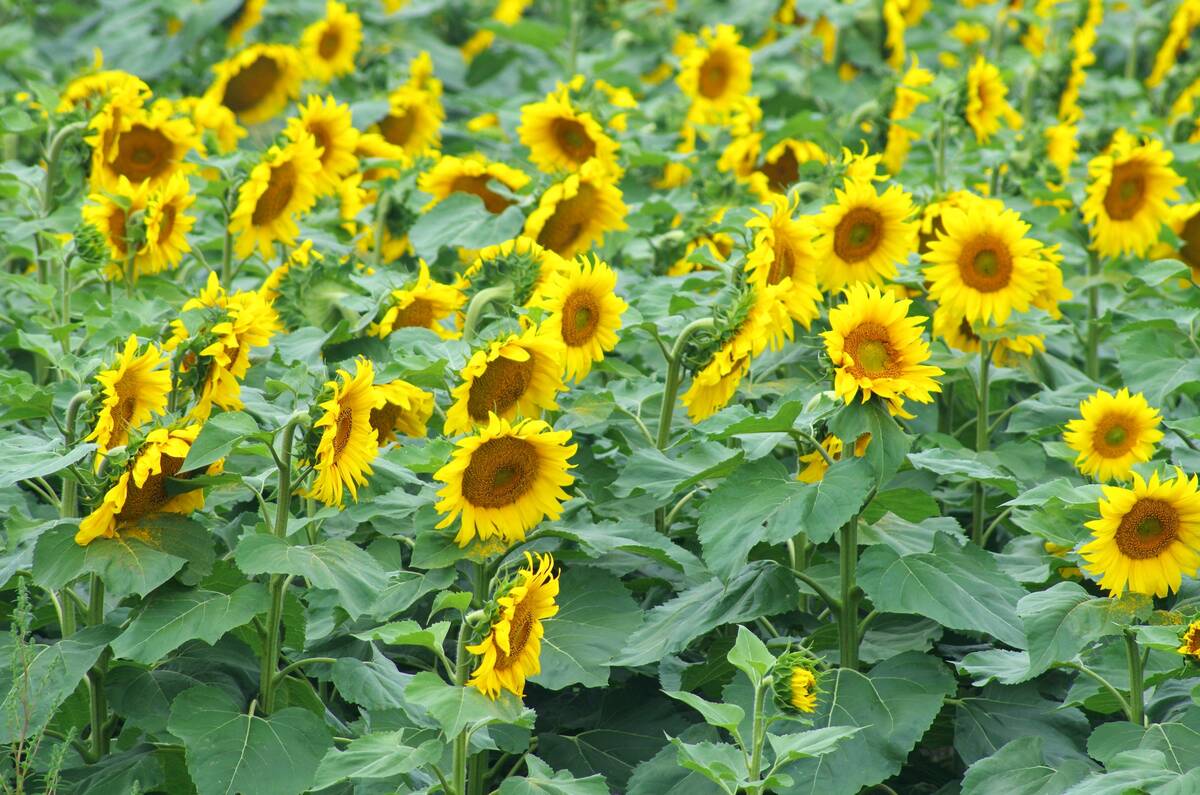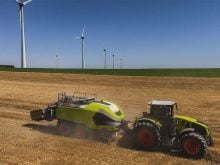Feeding bred cows for a buck a day might be hard to do this year, but
animal agrologists say cattle producers are getting creative about
their feeding strategies for the coming winter.
Feed is expensive in and out of the drought zone, and producers are
facing the challenge of raising bred herds on tight budgets.
“Growers are looking to stretch their supplies by ammoniating straw or
using liquid feed supplements,” said Naomi Paley of Saskatchewan
Agriculture in Yorkton.
Read Also

Bird repellent gets emergency approval for sunflowers
Bird repellent gets emergency approval for sunflowers
Christoph Weder of Alberta Agriculture in Camrose, Alta., said
ammoniating straw can be effective if done properly, but liquid feed
supplements are an expensive option that “work best to fill feeding
gaps between moving from tough pasture conditions or when waiting for
other alternatives to become available.
“Alfalfa hay is still cheaper and it’s easier to manage than liquids,
but (liquids) do work under the right conditions.”
Brian Doig of Saskatchewan Agriculture in North Battleford, Sask., said
liquid feed supplements injected into straw bales can produce a partial
ration, but should be topped up with vitamin A and grain to improve the
energy content.
Gerald Michaud, who farms near St. Paul, Alta., thinks he may have a
solution to applying liquid feed supplements. He and a partner have
developed a liquid supplement applicator called Molmixer that sprays
the nutrients onto chopped straw as it leaves the bale shredder chute.
“You can set your rate from the cab and then you know it is on the
straw and the cattle are getting it. More effective than a lick tank.”
Paley said liquid feed can effectively stretch feed supplies and make
straw more palatable, but cattle should be watched to ensure they are
getting enough of the supplement.
Agronomists say ammoniation has its greatest potential with chaff, but
straw is also effective.
“Ammoniation is a good bet for straw, if you have straw,” Doig said.
“In (the northern Saskatchewan grain belt), we don’t have much straw
this year. There will be some done and for that it will take a three to
six percent protein straw and make it into a eight to 11 percent feed.
It works really well with chaff. There, improvements in digestibility
rise by 15 percent.”
Weder said ammoniation is more effective on looser bales.
“The newest hard core balers produce a pretty tight bale,” he said.
“Great for storage. Not so good for ammoniating. Looser is better here
… and producers should consider baling at 35 percent moisture if they
are going to treat them. It saves having to try to add water later and
might help avoid having high moisture areas that can end up being
toxic.”
Paley said farmers should remember the safety concerns of handling
anhydrous ammonia.
“Protective gear. Cover the stack of straw or chaff tightly. Don’t
over-apply the ammonia. Use a meter to apply it and it should be
(applied) at three percent of dry matter.”
She said liquid supplements and ammoniation aren’t “silver bullets.”
“You need to get your feed tested to be sure about what you’ve got, but
any option may be the right option for some producers this year.”
Vern Racz of the Prairie Feed Research Centre in Saskatoon said
producers should talk to someone who has tried it or call a provincial
agrologist and get advice when trying things they haven’t tried before.
















